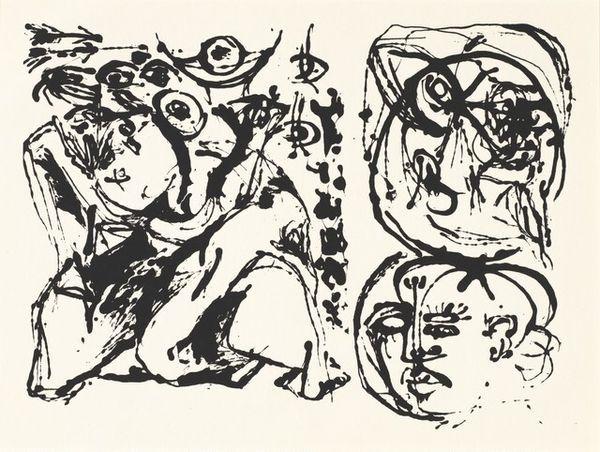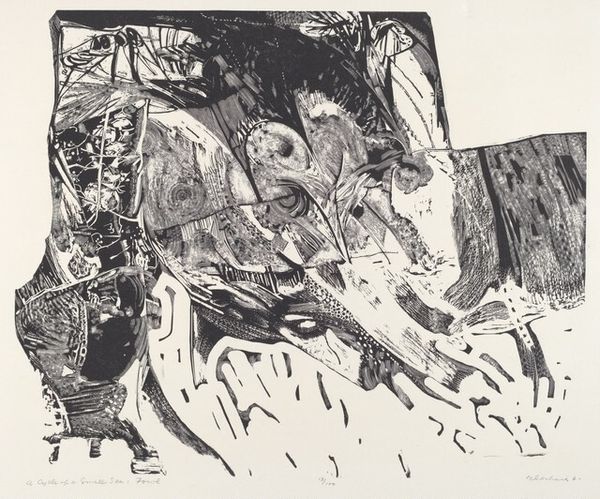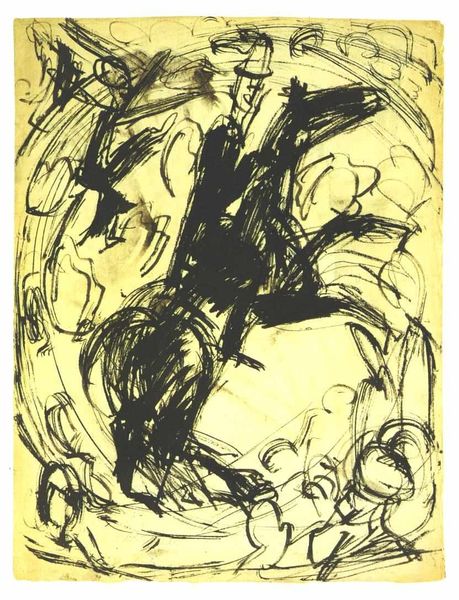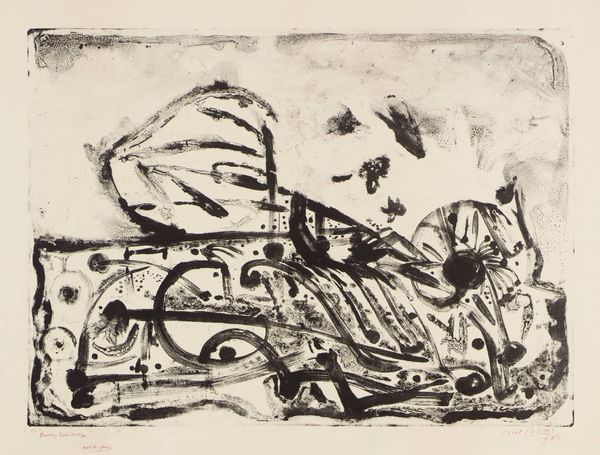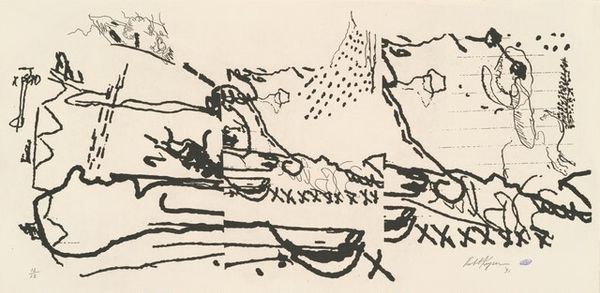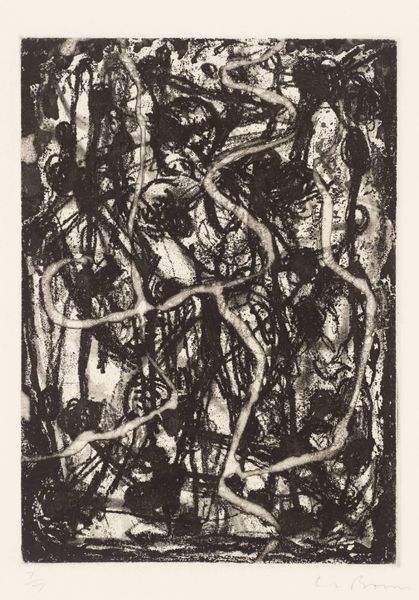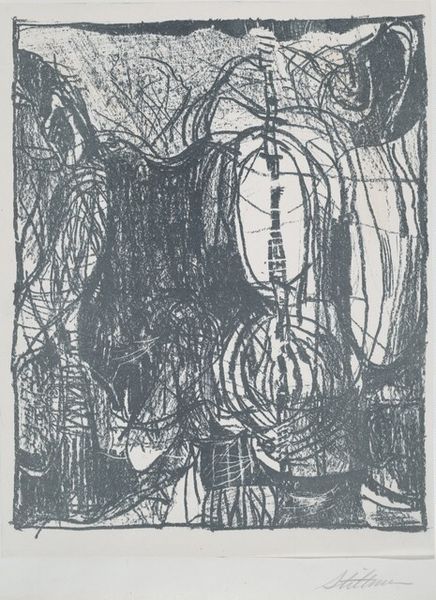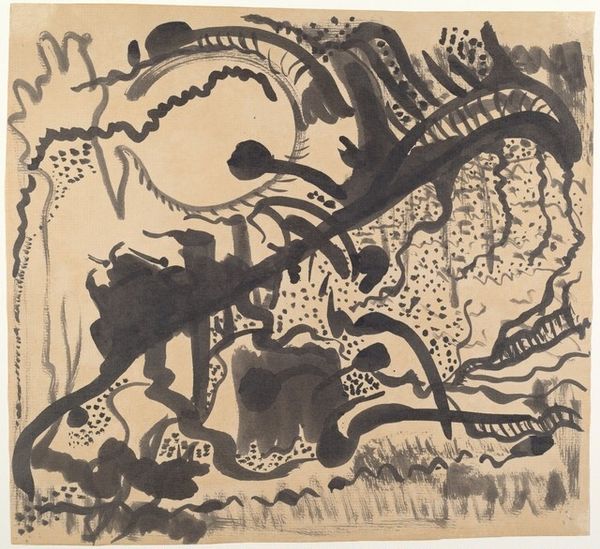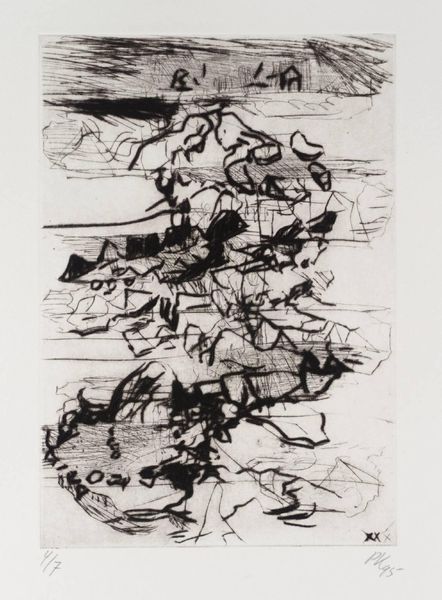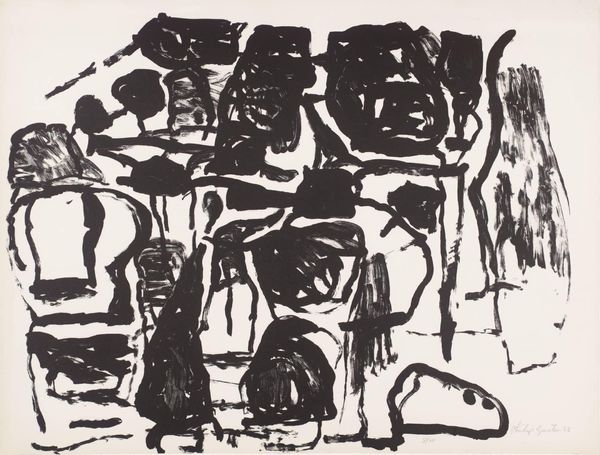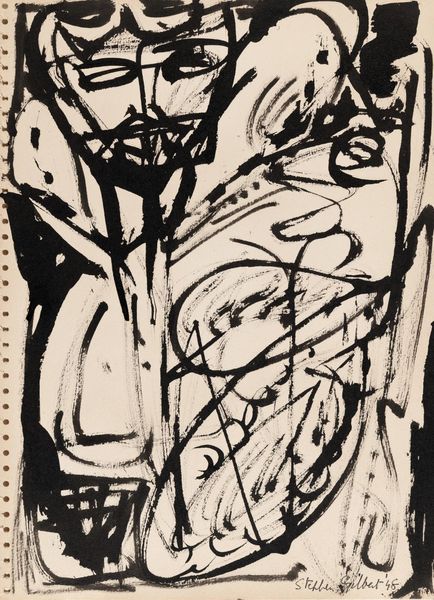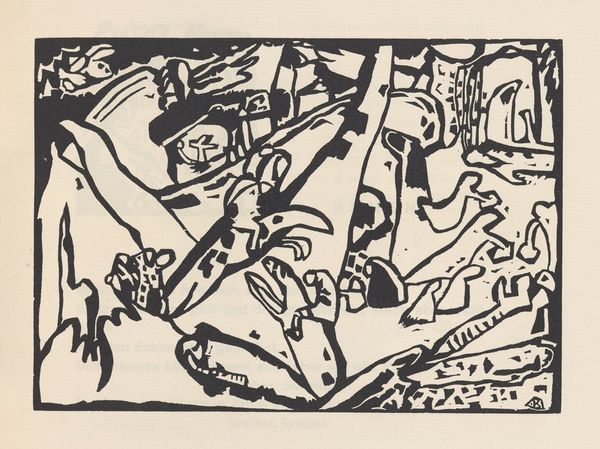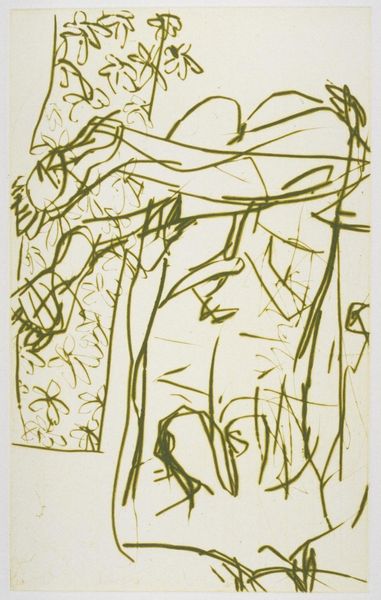![Untitled [Number 7] by Jackson Pollock](/_next/image?url=https%3A%2F%2Fd2w8kbdekdi1gv.cloudfront.net%2FeyJidWNrZXQiOiAiYXJ0ZXJhLWltYWdlcy1idWNrZXQiLCAia2V5IjogImFydHdvcmtzLzc4ZDQxYzU0LTlmM2YtNGY0ZS04ZmY0LTNkYjFhMWY3YjdjMC83OGQ0MWM1NC05ZjNmLTRmNGUtOGZmNC0zZGIxYTFmN2I3YzBfZnVsbC5qcGciLCAiZWRpdHMiOiB7InJlc2l6ZSI6IHsid2lkdGgiOiAxOTIwLCAiaGVpZ2h0IjogMTkyMCwgImZpdCI6ICJpbnNpZGUifX19&w=1920&q=75)
#
action-painting
#
abstract-expressionism
# print
#
line art
#
abstraction
#
monochrome
Dimensions: overall: 58.5 x 73.7 cm (23 1/16 x 29 in.)
Copyright: National Gallery of Art: CC0 1.0
Editor: So, here we have Jackson Pollock's "Untitled [Number 7]" from 1951, a print that is strikingly monochrome. It's all dense lines and chaotic shapes... quite busy, to be honest. What do you see in this piece? Curator: Let's consider the formal aspects. Observe how Pollock eschews traditional composition for an all-over approach. The interplay of line, density, and the stark contrast of black on white generates a dynamic tension. How does the absence of a focal point affect your viewing experience? Editor: Well, it definitely makes my eye dart around, trying to find some kind of anchor, but there isn't one. Is the absence of a focal point supposed to symbolize chaos, or something? Curator: Consider instead its implications on the structure of the work. By avoiding a central focus, the entire surface becomes equally important. Think about the materiality of the print itself – the texture, the quality of the ink, and the intentionality behind each mark. We may interpret its formal composition in terms of the artist’s engagement with gesture, action, and the semiotic potential of line. How do you perceive the surface? Is it planar or does Pollock create the sense of depth? Editor: It feels like layers are on top of each other. I guess, depth, because you can see some of the lines underneath. It’s like he's challenging us to find order in this visual experience? Curator: Precisely. Perhaps he challenges the viewer's expectation to locate inherent forms, in a composition relying exclusively on surface, medium, and gestural composition. So what could the purely visual vocabulary here convey? Editor: I guess it focuses our attention purely on the way the artwork is made? The lines, and shapes. So it removes some of the subjectivity... interesting. Curator: Indeed. It showcases the essence of abstraction, prompting us to contemplate the visual language divorced from representational meaning. Editor: I appreciate that way of thinking about it now, rather than just seeing random lines, you know?
Comments
No comments
Be the first to comment and join the conversation on the ultimate creative platform.

